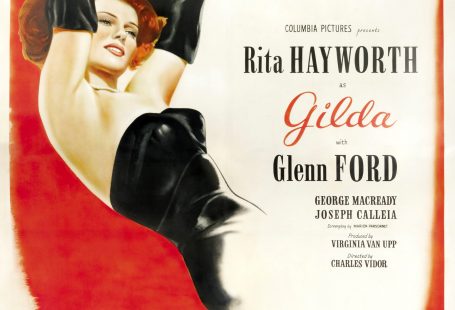Abstract. Authors’ moral rights and cinema: the rights granted to authors and their powers in respect to moral rights in civil and common law countries; the significance of the recognition of specific moral rights as part of copyright law and the break with the traditional conception of moral rights in common law countries. Some comments on recent controversies with regard to films’ colourisation (John Huston case: the Asphalt Jungle – French Cour de Cassation on 28 May 1991; Fred Zinnemann case: the Seventh Cross – Court of Rome on November 2005)
Authors’ moral rights and the dichotomy regulation between civil and common law
Essentially the world of copyright is divided into two fundamentally different ideal types, one that includes moral rights, and another that excludes moral rights.
Common law countries set their right’s principles in the idea of property. Civil law countries are more concerned about authors as individuals and less interested in economic rights. Anglo-Americans understand the meaning of authors’ moral rights, but they give them a secondary importance respect to the civil law countries. Common law courts were fully cognisant of these two ways of protection: while they recognized the existence of the concept of moral rights in civil law countries, they completely and uniformly rejected its applicability in their own jurisdictions.
It has been a rule of comparative copyright scholarship that the most significant difference between Anglo-American and Continental European copyright law was their respective attitudes toward moral rights. Moral rights protect the personality and the reputation of the creator, rather than the purely monetary value of a work.
In film they give creators the right to be identified as authors; to object to the derogatory treatment of the film, which amounts to a distortion or mutilation or is otherwise prejudicial to the honour or reputation of the authors.
The extremely different recognition of moral rights to filmmakers in civil law and in common law countries provokes disorganization and caused a problem in the recognition of rights granted to them. Also it seems unreasonable that a filmmaker to see their rights recognized has to settle a lawsuit in Europe and can not advocate his requests in the country where the infringement occurred. Then it is inexplicable that when a filmmaker wins a lawsuit for moral right’s infringement in Europe, then the decision does not have any worldwide value and so on the other side of the Atlantic the audience can still watch a film in the way that was judged against the artist or that was repudiated by the creator.
An example is the colourisation of a film that can be judged in opposition’s to the artist’s will in Europe, where the broadcasting of such a film had been banned because it was considered a mutilation or a distortion of the original version of the motion picture, but in the United States it is considered perfectly legal. This means that in the United States the audience can watch without any problem a colourised version of a film, but not in France or in Italy. The result is that in common law countries the rights granted to filmmakers when he has sold his film are really restricted and that is problematic, especially after the recognition of the Berne Convention by the United States.
Film as an example of disputes about moral rights?
Legal problems related to moral rights in films and new technologies have mainly centered on digital colourisation of black and white feature films and litigation about digital re-colouring of black and white masterpieces; damage to the integrity right of a work through the addition of breaks on TV and through the insertion of commercial advertisements and other extraneous content during broadcasts of films and other works; editing by broadcasters, distributors and other entities that damages the integrity of a feature film or other work: does slicing, dicing and bowdlerising film and video programming destroy its integrity?
Sometimes in countries where moral rights are not taken into consideration authors prefer to distance themselves from what they created rather than be recognized for them. Thus some filmmakers have sought to disassociate themselves from works that they consider have been mutilated by studios. This way is better known as the anecdote of ‘Alan Smithee and friends.’
The work is then evidence of the skill of the artist, so to judge a legal case related to moral rights in films it is has to be considered if the author is still living or not because if the artist is still living, he can clarify his intentions and preferences for the presentations of their work. If the artist is no longer living, modifications are objectionable: an additional piece of information about the artist’s skill, if he made a conscious, sensible decision not to use an available technology (for example to intentionally shoot a film in black and white.)
Another big difference might be with regard to modifications: modifications that are not clearly identified as such, when the modified work is “passed off” as the “original” work to a new audience, are more likely objectionable. Changes made by someone else without the permission of the artist are more likely objectionable to the modifications made by the artist; if the derivative/ altered work is clearly identified as such, it does not fully reflect the intentions of the artist and her or his skill in artistic decision-making.
John Hust case: the Asphalt Jungle – French Cour de Cassation on 28 May 1991
The contested legal issue in the captioned case is concerning about the colourisation of the long feature film Asphalt Jungle, directed by John Huston, and co-written by Huston and Ben Maddows and was related to the attribution of authorship to the creators of the film and consequently the protection of their moral rights against distortion of the motion picture under the French law.
This legal case demonstrates that what is perfectly acceptable in the United States may not be so acceptable in an environment where an artist has been given the opportunity to preserve the integrity of the work he has created regardless of who or which entity financed or currently possesses the economic rights to the work.
With regard to the regulation of the right of the author to safeguard the integrity of audiovisual work, the different approaches of civil law, in this case the French legislation, on one hand and the common law, in this case the United States Copyright Act,are well highlighted in this case. Although the director had renounced his rights in the United States, in France in 1991 the heirs of John Huston (1906-1987) gained substantial damages in Huston v. la Cinq over broadcast of a colourised version of the film The Asphalt Jungle. The broadcast was objected to by John Huston’s heirs, Angelica, Daniel and Walter Huston.
This is what happened. The Turner Entertainment Company (TEC), which colourised the film, acquired the rights to Asphalt Jungle when it merged with Metro Goldwyn Meyer (MGM). It had claimed that the colourisation of a motion picture was not a mutilation, but an adaptation of the work, leaving the original black and white version of the motion picture intact.
The French court disagreed with that view and held that, in France, Huston was the film’s author and through his estate he was entitled to assert his moral rights and his heirs were awarded 600,000 Francs damages for injuring the film’s integrity.
The decision was based on a substantial difference between the United States concept of moral rights and the notion of authors’ rights in France.
According to the French law the director and the screenwriter are considered co-authors of the film and are consequently granted inalienable and indefeasible moral rights in the motion picture.
According to the United States Copyright Act Cinematographic, works are considered as “works made for hire” if their authors have been employed by the producer or the work may otherwise be regarded as commissioned by the producer, which usually is the case. Consequently according to the United States law, film authors do not enjoy any rights in the work unless they have acquired the rights contractually. Producers are vested with all rights to the film directly by the law.
The final decision of the Huston case given by the court of first instance of Versailles drew an important distinction between the right of adaptation and the right of integrity with regard to altering audiovisual works.
To colour a film is to neither make it better nor worse than it was in black and white, rather it is an aesthetic choice a director makes to present his art form. Indeed, black and white films present more than just the fact that there is no colour, but they represent a very distinct rule of lighting, contrast, framing and camera use. These differences and the fact that a film may have been shot in black and white, in an era where there had been available the choice of colour, can strongly attest to a sentient decision made by a director to make use of the unique mood and aesthetic character possible only with the use of black and white film.
According to the French court colourisation consists of a modification of the work by adding to it an element having nothing to do with the aesthetic concept of its creator. Moreover, the court ruled that colourisation is not an adaptation, or an original work itself, rather it is a modification of the original work, an element that was not part of the original artistic notion that adds a new element of colour to the work.
Additionally, the fact that the black and white film was made at the time when colour was available to the artist, and therefore, the author had made a deliberate and intentional aesthetic choice that black and white, rather than colour, photography was more suitable for the work made the film’s subsequent colourisation, without authorization and control by the authors or their heirs, a violation of the creative activity of its authors, even if for commercially obvious reasons it might better satisfy the expectations of a certain public.
Fred Zinnemann case: the Seventh Cross – Court of Rome on November 2005
Another case similar to the above mentioned lawsuit is the one that the director John Huston ‘s heirs brought in 1988 after a French TV station broadcast a colourised version of The Asphalt Jungle, is the Zinnemann’s lawsuit. Similarly in fact Fred Zinnemann (1907-1997) protested the 1996 broadcast by Italian network TV Internazionale (TeleMontecarlo) of a colourised version of his 1944 film entitled The Seventh Cross.
This is the story of the lawsuit. Fred Zinnemann, who died in 1997, was a strong enemy and opponent of colourising. In October 2005 an Italian court ruled that Italian network TV Internazionale (TeleMontecarlo) breached the moral rights of director Fred Zinnemann (United States, 1907-1997) by recurrently broadcasting a colourised version of his 1944 film, The Seventh Cross.
It wasn’t the first time that the TV station broadcasted Zinnemann’s film. On May 26, 1996 the station broadcasted a colourised version of The Seventh Cross.
That time Fred Zinnemann fired off many letters demanding that the station “recognize that they violated my ‘moral rights’ and publicly apologize in the press.” He also wanted the TV station to pledge that they “will respect the moral rights of audiovisual authors, writers and directors, in the future.”
However, Zinnemann got no pledge and no apology. Instead, only four months after Zinneman’s death, the TV station re-broadcasted the colourised movie.
His son decided to take up his father’s fight for “moral rights” of filmmakers. In 1999 his son sued the network for breach of Zinnemann’s moral rights and in November 2005 he won the lawsuit. Eventually the Italian court ruling in his favour prohibited further broadcasts.
Because Technicolor was available at that time, during the lawsuit debate it was demonstrated that the director chose to film The Seventh Cross in black and white and that colourisation clearly harmed his artistic integrity. For that reason the TV station was ordered to pay damages and destroy its colourised copies.
The decision in favour of Zinnemann’s son was possible because in Italy moral rights are recognized to authors. The order was not, of course, binding on bodies outside the court’s jurisdiction and a colourised version of the film could be legally broadcast in the United States. No legislation was passed to allow him to sue Turner under law. But under Italian law, his son can sue the Italian TV stations that aired the colourised movie.
In Europe, a film’s director, writer and cinematographer are considered the film’s “authors,” but in common law countries only the copyright holder, and not the director, writer or cinematographer, is considered the film’s “author.” “…It is “ironic” that American directors have to sue in Europe to protect rights they do not enjoy in their own country…. the sad irony of this is that the integrity and authenticity of an American director’s film is more likely to be protected in a foreign country than in the director’s home country.”
It is necessary to harmonize the area of moral rights and to grant the same moral rights worldwide, to find a common regulation and common rules to decide a lawsuit. Also what is desirable is to grant a filmmaker more rights to protect his works and to prevent any significant alteration of them. After all conceding authors the moral rights in relation to their films means to recognize the value of a film as a work of art and not only as a piece of entertainment.
Dandi Law Firm provides legal assistance in Copyright and Film. Check out our Services or contact Us!





